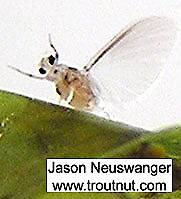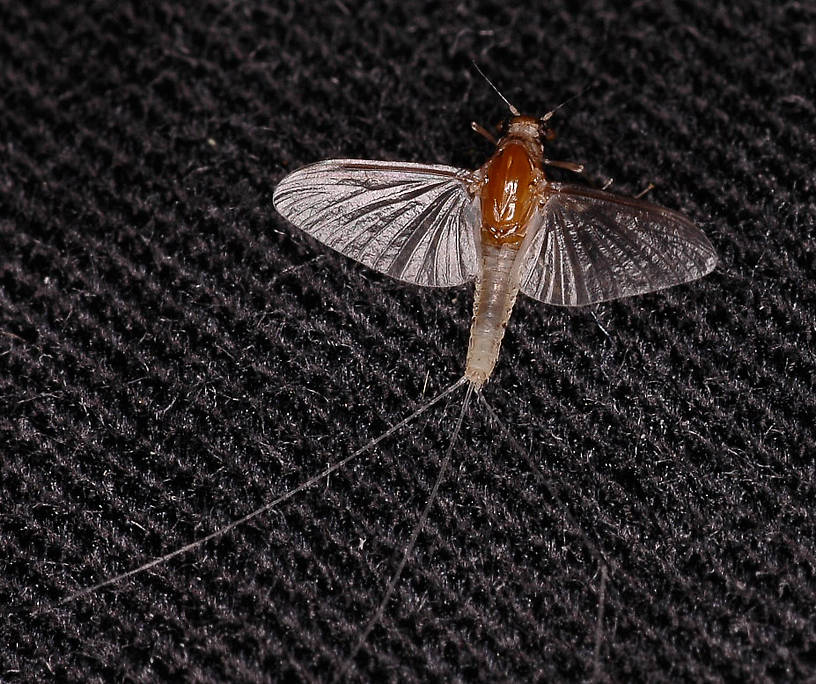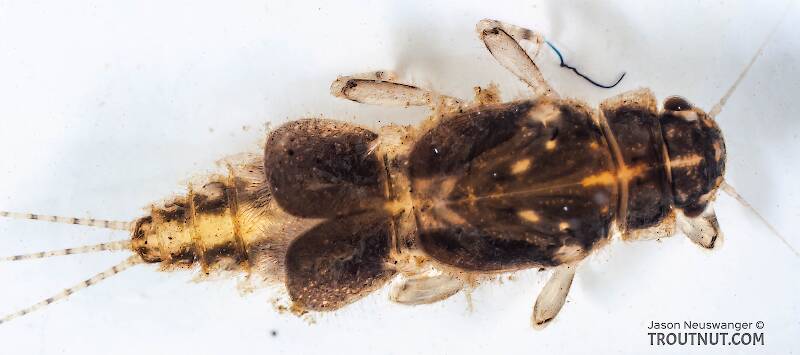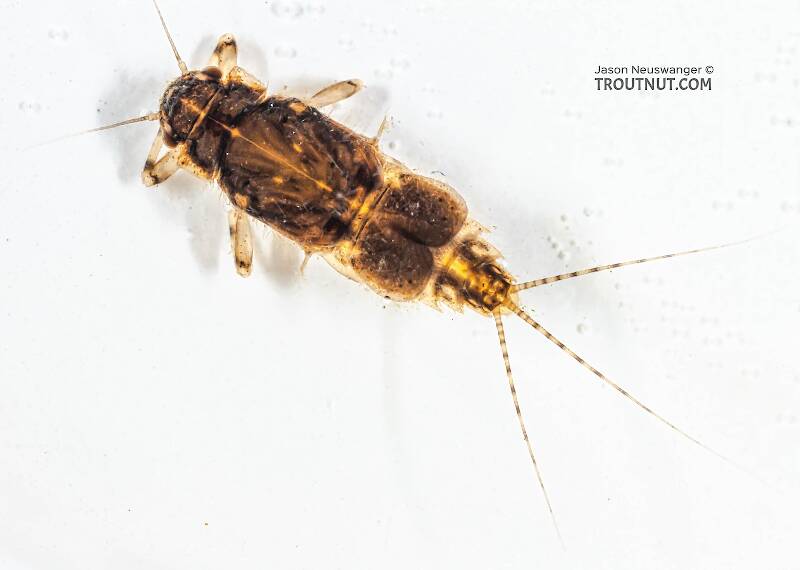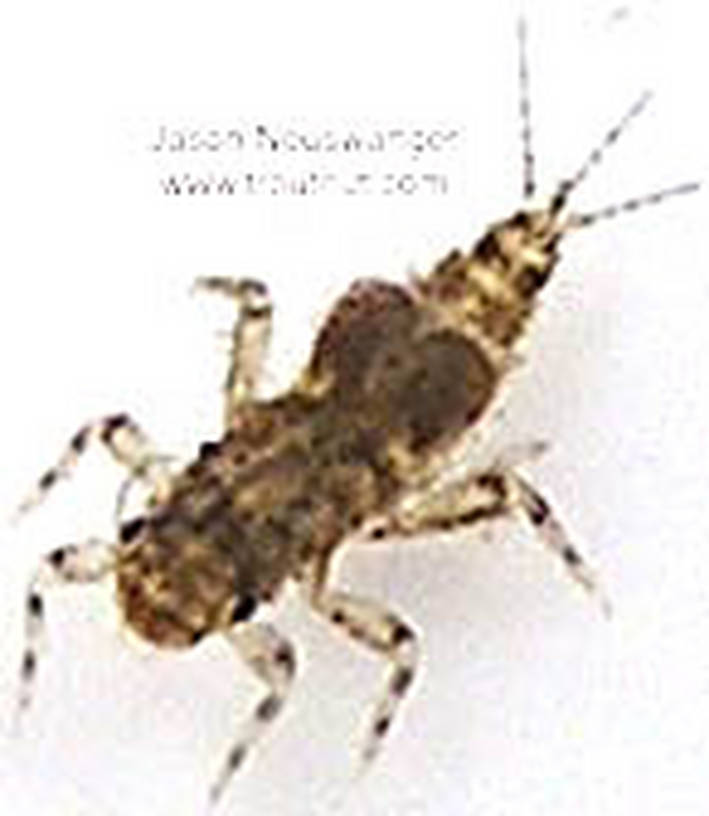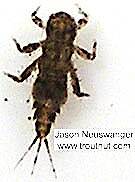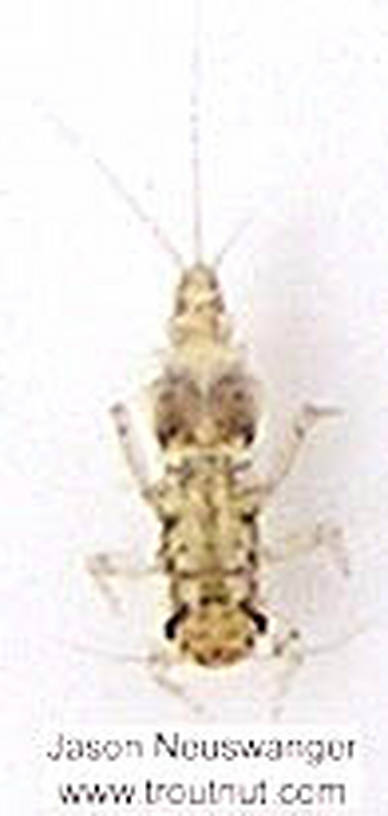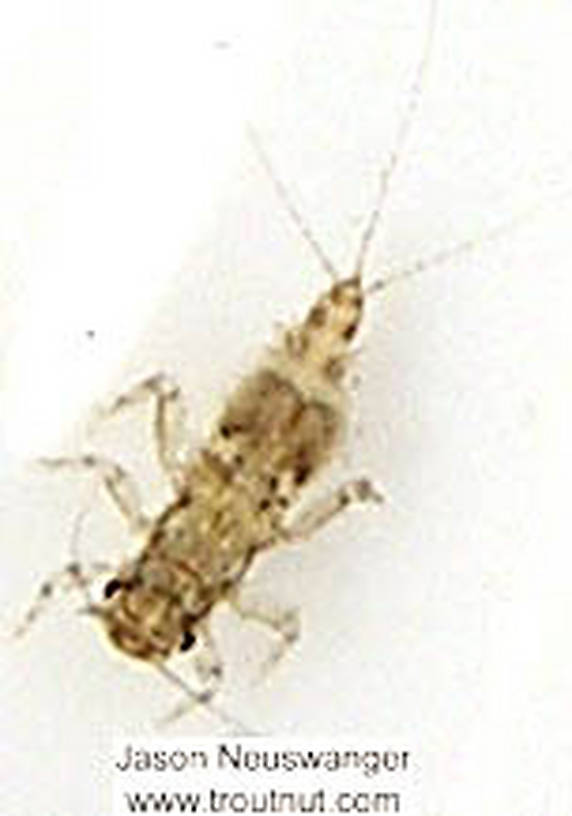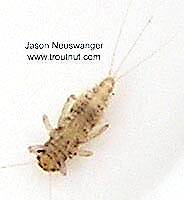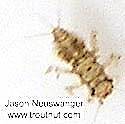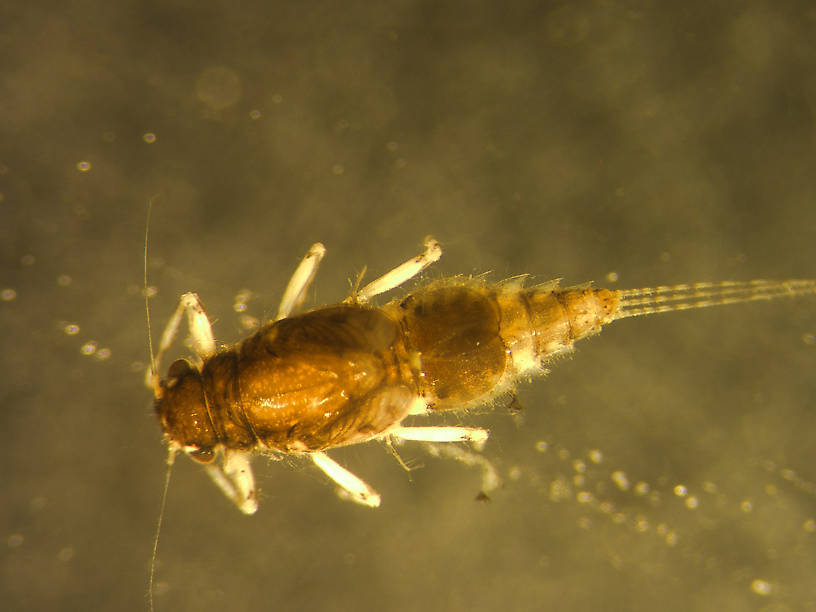
Blue-winged Olives
Baetis
Tiny Baetis mayflies are perhaps the most commonly encountered and imitated by anglers on all American trout streams due to their great abundance, widespread distribution, and trout-friendly emergence habits.
Featured on the forum

This is an interesting one. Following the keys in Merritt R.W., Cummins, K.W., and Berg, M.B. (2019) and Jacobus et al. (2014), it keys clearly to Ephemerella. Jacobus et al provide a key to species, but some of the characteristics are tricky to interpret without illustrations. If I didn't make any mistakes, this one keys to Ephemerella mucronata, which has not previously been reported any closer to here than Montana and Alberta. The main character seems to fit well: "Abdominal terga with prominent, paired, subparallel, spiculate ridges." Several illustrations or descriptions of this holarctic species from the US and Europe seem to match, including the body length, tarsal claws and denticles, labial palp, and gill shapes. These sources include including Richard Allen's original description of this species in North America under the now-defunct name E. moffatae in Allen RK (1977) and the figures in this description of the species in Italy.

Troutnut is a project started in 2003 by salmonid ecologist Jason "Troutnut" Neuswanger to help anglers and
fly tyers unabashedly embrace the entomological side of the sport. Learn more about Troutnut or
support the project for an enhanced experience here.
Mayfly Family Caenidae (Angler's Curses)
The tiny mayflies of this family are usually found in warm, slow, marginal trout water, although some trout streams hold good populations too.
The only genus ever known to produce fishable hatches is Caenis. It turns up frequently for anglers who sample nymphs, but it is rarely of any practical importance for fly fishing because its emergence traits and tiny size (even smaller than Tricorythodes) make it relatively unimportant.
Brachycercus is even more focused on warm water than Caenis.
The only genus ever known to produce fishable hatches is Caenis. It turns up frequently for anglers who sample nymphs, but it is rarely of any practical importance for fly fishing because its emergence traits and tiny size (even smaller than Tricorythodes) make it relatively unimportant.
Brachycercus is even more focused on warm water than Caenis.
Taxonomic History
Some relatively common trout stream species formerly known in Brachycercus were recently reclassified into Sparbarus and Susperatus.
Family Range
Identification
To determine whether a specimen of Ephemeroptera belongs to Caenidae, use the Key to Families of Mayfly Nymphs or Key to Families of Mayfly Duns and Spinners.
Specimens of the Mayfly Family Caenidae
1 Female Dun
1 Female Spinner
9 Nymphs
Discussions of Caenidae
Start a Discussion of Caenidae
References
- Arbona, Fred Jr. 1989. Mayflies, the Angler, and the Trout. Nick Lyons Books.
- Jacobus, L. M., Wiersema, N.A., and Webb, J.M. 2014. Identification of Far Northern and Western North American Mayfly Larvae (Insecta: Ephemeroptera), North of Mexico; Version 2. Joint Aquatic Science meeting, Portland, OR. Unpublished workshop manual. 1-176.
- Merritt R.W., Cummins, K.W., and Berg, M.B. 2019. An Introduction to the Aquatic Insects of North America (Fifth Edition). Kendall/Hunt Publishing Company.
Mayfly Family Caenidae (Angler's Curses)
Taxonomy
Genus in Caenidae: Brachycercus, Caenis
5 genera (Amercaenis, Cercobrachys, Latineosus, Sparbarus, and Susperatus) aren't included.


